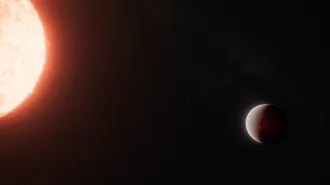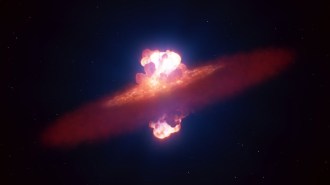On June 8, sky watchers who are in the right place at the right time will witness an event that hasn’t happened since 1882: Venus will drift across the face of the sun, appearing as a black dot against the solar surface (SN: 4/17/04, p. 247: Available to subscribers at Shades of Venus). In the United States, only people on the eastern seaboard have a chance of seeing this transit of Venus, and they’ll see only the last 90 minutes of the roughly 6-hour event. However, Venus-struck observers will be broadcasting the transit live over the Internet from Europe, which should have a ringside seat for the entire passage.

The Norwegian Astronomical Association will Webcast the event from several locations in Norway at http://www.astronomy.no/. The Webcast will start at 12 a.m. Eastern Daylight Time (EDT) June 8, about a half hour before the passage begins, and end at 7 a.m. EDT, about a half an hour after it’s over.
In a separate Webcast (http://www.exploratorium.edu/venus/), an astrophysicist with the Exploratorium science museum in San Francisco will transmit images from the event as seen from Greece beginning at 1 a.m. EDT on June 8 and finishing 6 hours later.
It’s unsafe to view the transit by staring at the sun. Just as during a solar eclipse, viewing must be done indirectly, for example, by allowing sunlight to shine through a pinhole and project onto a piece of paper. The next Venusian transit, and the only other one that will take place this century, will occur in 2012.







